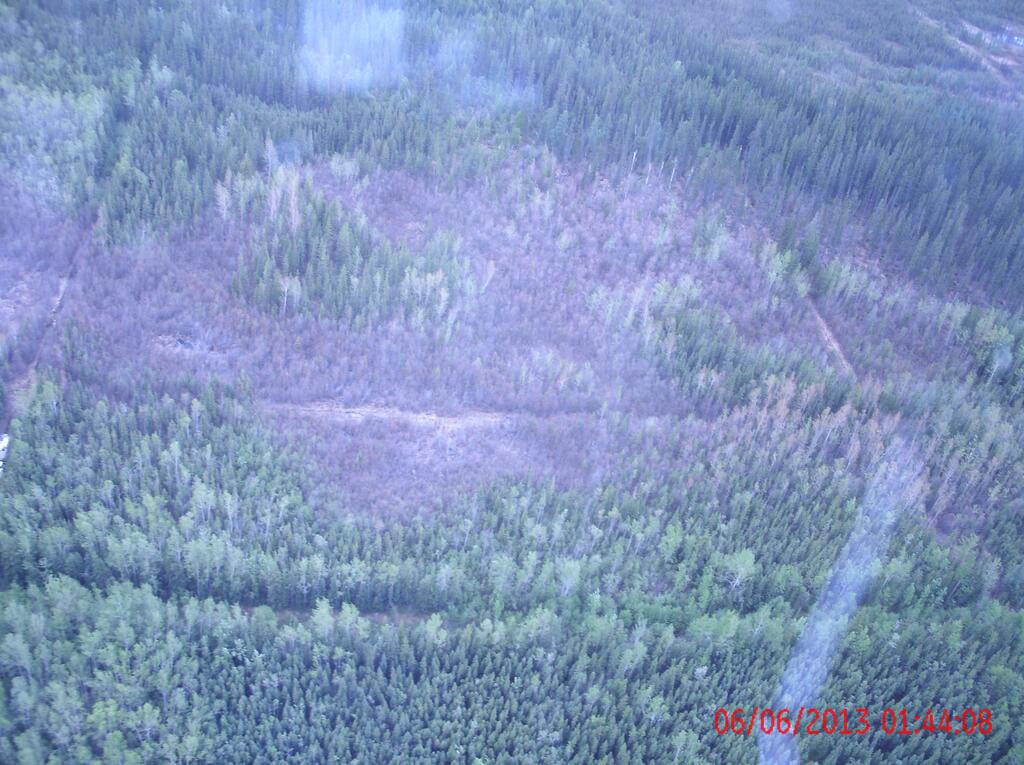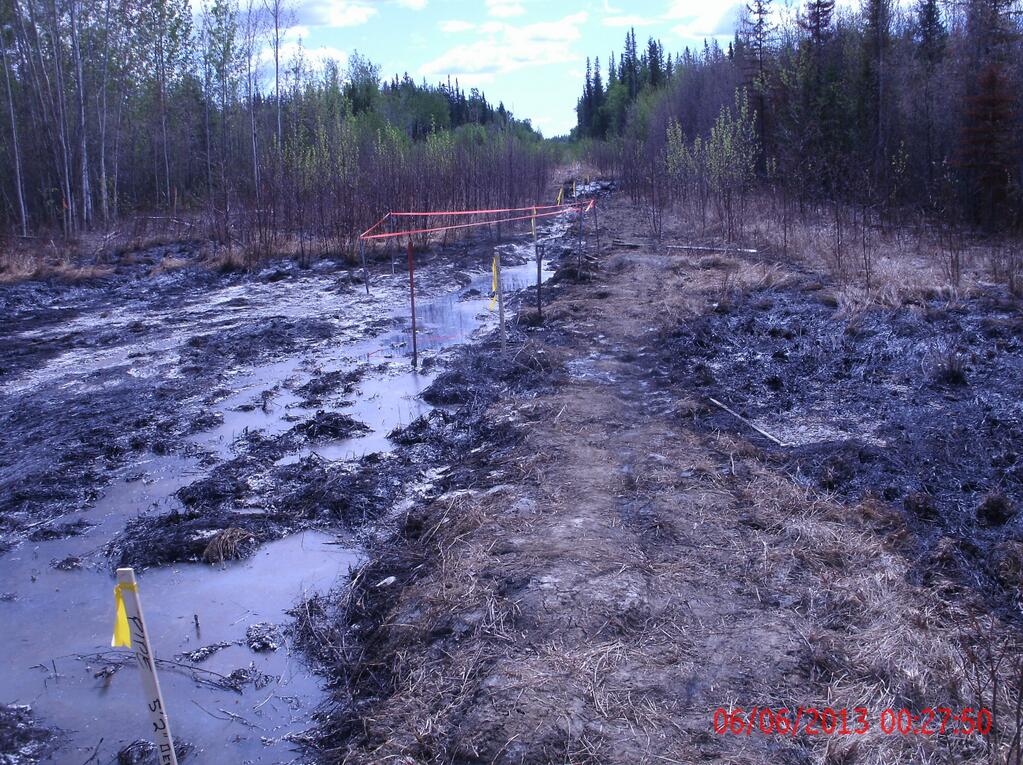Making awards history — and decolonizing journalism
IndigiNews editor Cara McKenna reflects on our shared National Newspaper Awards win — a Narwhal...
A week and a half after its discovery, Apache Corporation estimates that a toxic water leak from a pipeline has affected 42 hectares of land near Zama City in Northern Alberta. The spill released 9.5 million litres of what the company called “produced water” from its operations there, making it the tenth largest in the province since 1975.
Neither Apache nor Alberta Environment have spoken officially on the exact chemical content of the water.
However, the Dene Tha First Nation who has been trapping in the area since the 1950s report detection of “hydrocarbons, high levels of salt, sulphurous compounds, metals and naturally occurring radioactive materials, along with chemical solvents and additives used by the oil industry.”
No estimates have been released regarding the duration of the leak, although locals say the evidence shows it could have be present for "months" before it was detected on June 1st.
Chief James Ahnassay told The Globe and Mail “‘Every plant and tree died’ in the area touched by the spill.”

Apache spill from the air. Photo provided by Dene Tha to Globe and Mail reporter Nathan Vanderklippe and made available on twitter.

Images of the spill, released by the Dene Tha to Nathan Vanderklippe, show the high-oil content of the release. According to the ERCB roughly 2000 litres of oil were released in the 9.5 million gallon spill.
The Hay-Zama Lakes have been designated an "Area of International Importance" since 1982, by the Ramsar Convention on Wetlands. Both lakes are connected by networked waterways.
The Dene Tha has provided the first photos of the affected area, which show wide swaths of brown evergreens and black swampy fields where once there was marshland. The area around Zama City is protected as a Wildland Provincial Park and is a critical habitat for migrating waterfowl and prized for its interlocking waterways, muskeg and wetlands noted for their biological diversity.
Although the leak was reported on June 1st, it was not acknowledged publicly until a week later when a local resident reported it to a newscaster. On Monday, a spokesperson from Alberta Environment said both they and the Energy Recourses Conservation Board had staff on the ground near the spill. But the agency refused to give any estimates about the size until today, saying they were still assessing the situation.
Globe and Mail reporter Nathan Vanderklippe, who has been persuing the story since at least June 10th, has received very little information from either Apache or the Alberta government. Although Apache noted the duration of the release is under investigation.
Q: How much spilled? A: "Don't have a volume. That's part of the investigation." Spill happened June 1, btw. #apachespill
— Nathan VanderKlippe (@nvanderklippe) June 10, 2013
Q: What spilled? A: Produced water. Q: Were they hydrocarbons? A: "Water sampling is being taken daily." But no answer. #apachespill
— Nathan VanderKlippe (@nvanderklippe) June 10, 2013
Q: What size of pipeline spilled, and how old was it? A: "I don't have a diameter or age." #apachespill
— Nathan VanderKlippe (@nvanderklippe) June 10, 2013
Q: How long was it spilling? A: "That's part of our investigation." #apachespill
— Nathan VanderKlippe (@nvanderklippe) June 10, 2013
Q: Does this area produce oil or gas? A: Both. #apachespill
— Nathan VanderKlippe (@nvanderklippe) June 10, 2013
Q: Has any of the leak made it to water? A: No. Q: Have there been any impacts to wildlife? A: "Not at this time." #apachespill
— Nathan VanderKlippe (@nvanderklippe) June 10, 2013
Dene Tha: "every plant and tree" touched by #apachespill is dead. Dene Tha also suspect waterfowl died, although Apache says they haven't.
— Nathan VanderKlippe (@nvanderklippe) June 12, 2013
Greenpeace campaigner Mike Hudema is questioning the Alberta government’s motive in keeping quiet on the details of the spill:
“With a spill so large why did the Alberta government not report it to the public? Was the Redford government hoping that because of the remoteness of the area that they could just cover it up because no one would notice?”
This is a very chilling question because a yes answer means that Alberta has a government willing to go to almost any length to control it’s image regardless of the truth, the impacts on the environment or the public’s right to timely and accurate information.”
Apache characterizes its operations near Zama as using “a novel enhanced oil recovery method to produce oil from what were once thought to be exhausted wells.”
It is unclear whether this spill comes directly from their fracking operation or from another operation in the area.
Globe News reports there were “23,484 of produced water spills in Alberta between Jan. 1, 1975 and Feb. 4, 2013.”
Apache Corporation has had 949 spills in that time, 575 of which were produced water. None of the companies three media relations personnel were available for comment on this story.
Image Credit: Dene Tha
IndigiNews editor Cara McKenna reflects on our shared National Newspaper Awards win — a Narwhal...
Internal documents revealed the closed-door push for Alberta’s renewables energy pause. Here’s everything you need...
The Ksi Lisims facility in the Nass estuary, backed by the Nisg̱a’a Nation, would produce...